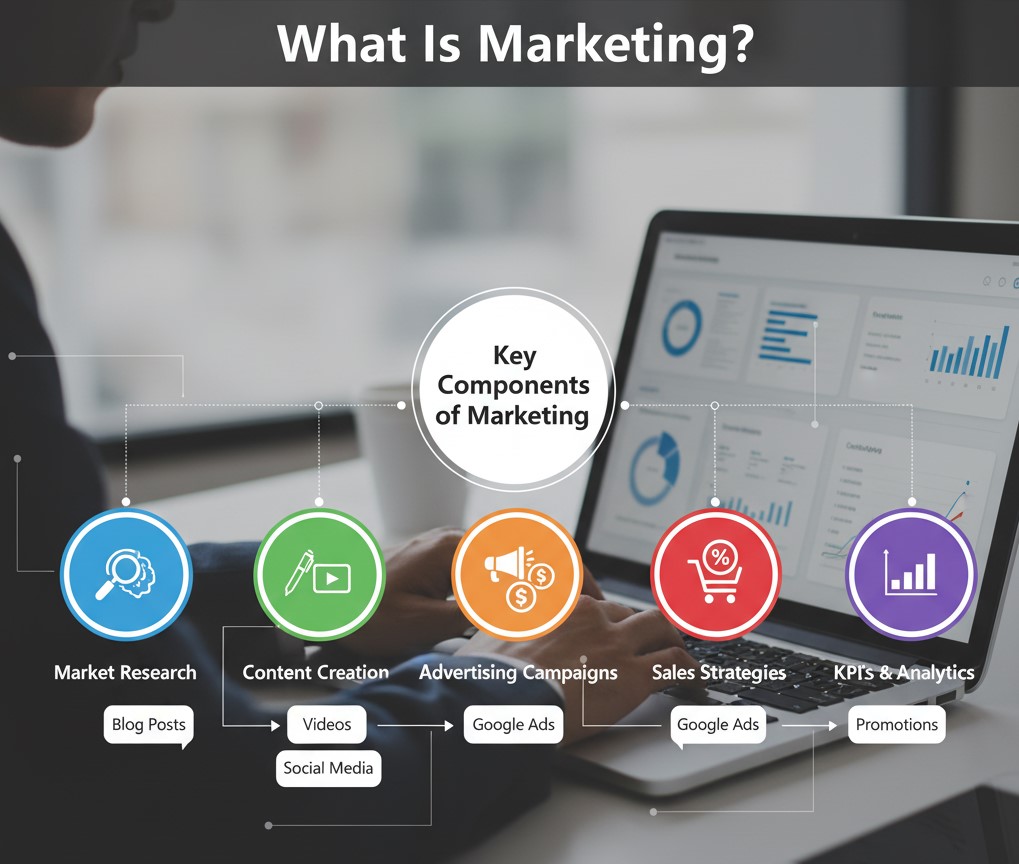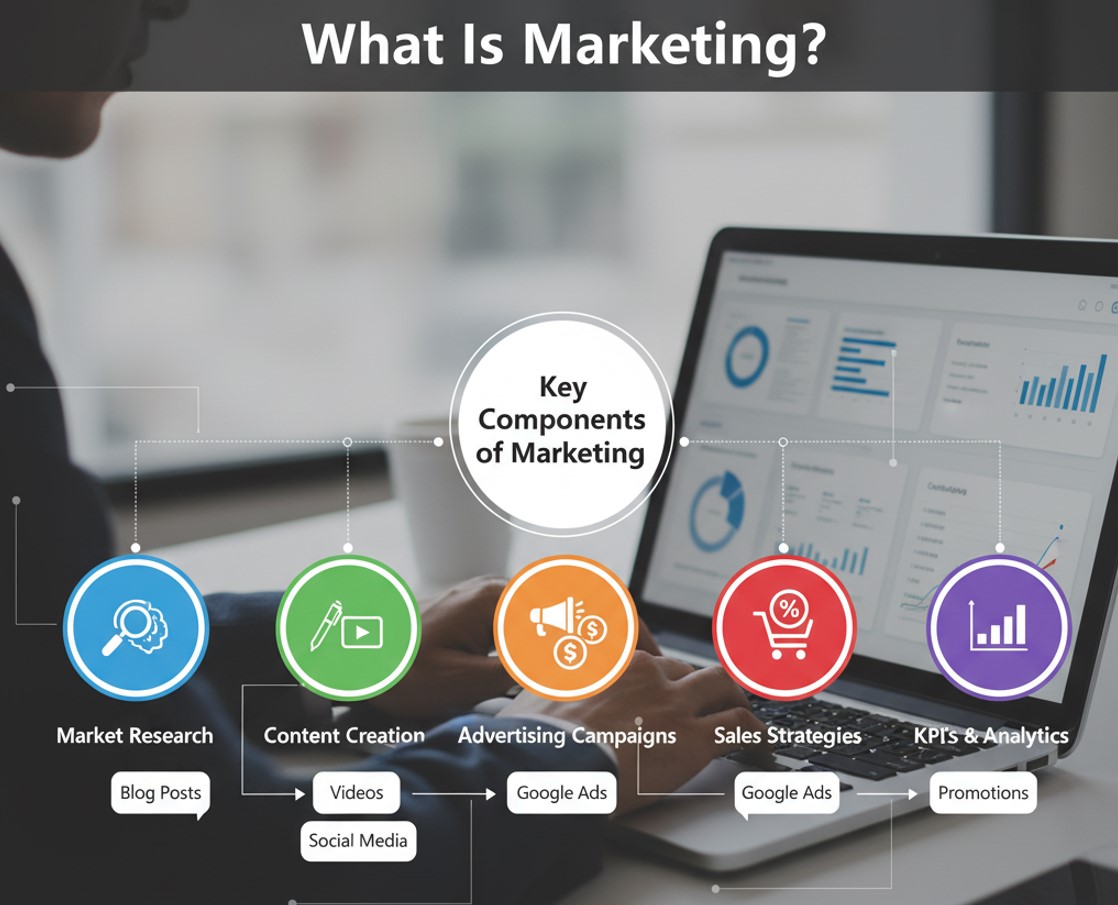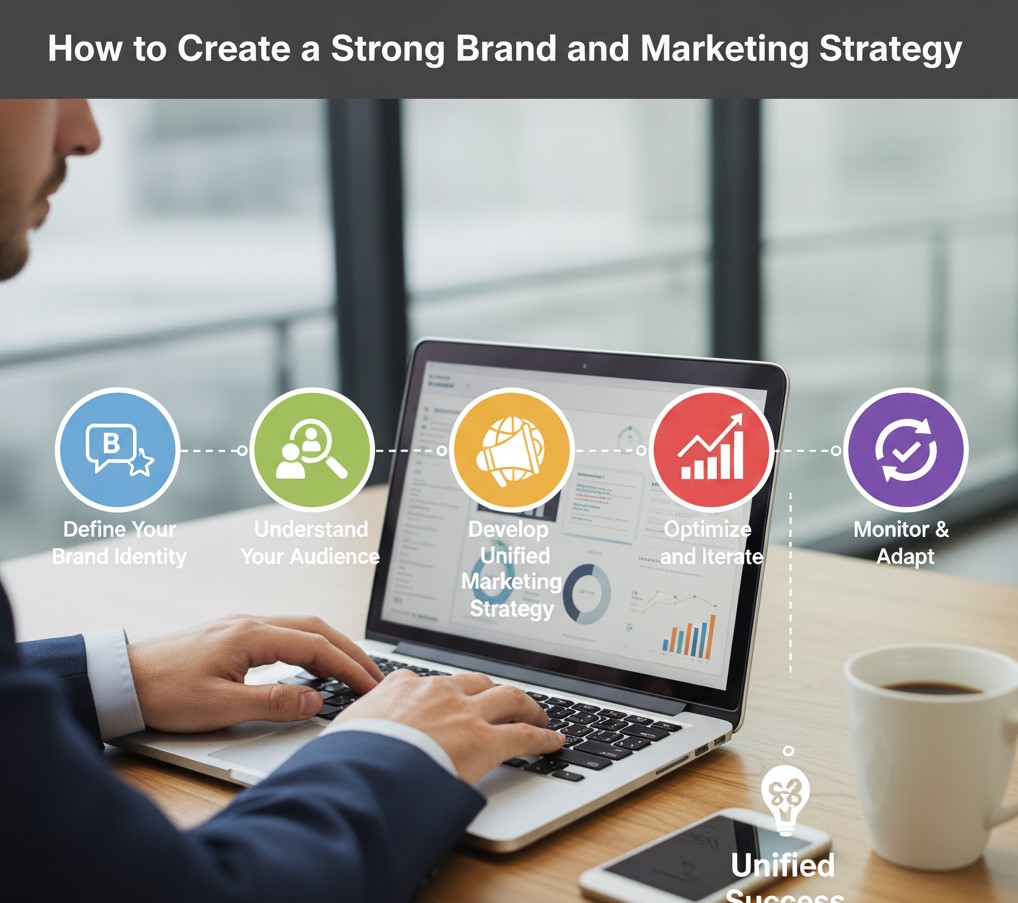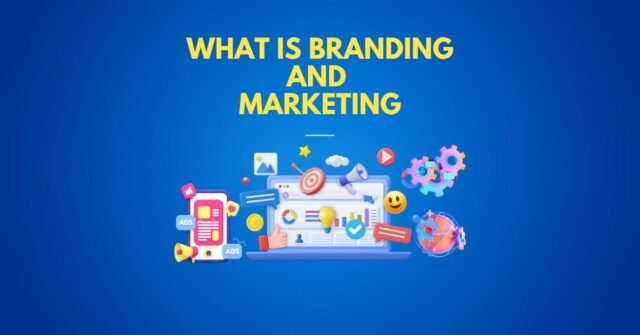Branding & marketing are two of the most common concepts that form an essential part of a business strategy, and the concepts are often not understood properly and sometimes used interchangeably. Though related, these terms serve different functions in defining business expansion and customer interest.
This is the blog that will demystify branding and marketing. You’ll learn how they work, how they work together, and how to use them in tandem for the best results. You may be a small business owner or a business expert; this guide will offer new ideas to improve your approach to business.
What Is Branding?
Branding is the act of identifying yourself with a brand to make that brand unique in the mind of the customer. Truly, it’s who you are, what you stand for, and how you want customers to think about you. Branding is more than just a logo or set of colors – it’s your mission, your values, your personality, and the emotion you incite in your audience.
Key Components of Branding
- Visual Identity: This is related to your brand’s logo, colors, typefaces, and general look and feel that makes your business instantly identifiable.
- Brand Voice and Tone: The way your brand speaks in emails, if businesslike, humorous or uplifting.
- Mission and Values: Your brand’s reason for being and the reason for going to work.
- Brand Perception – This is a by-product of what consumers experience, feel, and are told about your business as they interact with it over time.
Why Branding Matters
Branding helps firms create differentiation in competitive markets. Consider iconic companies like Nike or Apple. You know their logos when you see them, but their brand identity is far more than skin deep; it speaks to the emotions and values of their audience. A good brand promotes customer loyalty and confidence and commands higher prices — customers buy your product or service, even if it’s priced higher than competitors.
What Is Marketing?

Marketing, on the other hand, is the act of promoting and selling products or services. This includes the tools, tactics, and methods involved in communicating with your target audience in a way that is effective for your brand.
Key Components of Marketing
- Market Research – Uncovering the mind of your audience, their behavior, and interests.
- Content Creation – Copywriting, but also your blog posts, your videos, your social media posts, everything you use to attract and inform your prospects or your customers.
- Advertising Campaigns: Paid campaign on a network like Google, Facebook, etc, to target potential clients.
- Strategies Sales: Deals and promotions that encourage immediate sales.
- KPIs and Analytics: Tracking what marketing is converting and where it can improve.
Why Marketing Matters
You need marketing strategies that make your audience continually conscious of your products and services, compelling them to act. Great campaigns generate interest about the line, converting leads to new customers and old customers into lifetime users. It’s the carrier by which your brand gets to your audience.
The Nominate Difference: Branding vs. Marketing
The difference is not so much in scope. Branding is identity and perception; marketing is action and execution.

Branding Solves the Following Problems:
- Who are we as a business?
- How do we want customers to feel when they think of us?
- What sets us apart?
Marketing Asks Questions Like:
- How do we get to where the people we need to be communicating with are?
- How can we leverage platforms and approaches to market our product?
- What will convert the customer?
In essence, branding is marketing’s foundation. 3) With no definable brand, no casual consumer response to advertising e.g. Marketing flatlining, outreach, and advertising stuck in your head.
The Relationship Between Branding and Marketing
Branding and marketing go hand in hand. Secondary to that, we’d be losing sight of the fact that when done well, branding is to reinforce marketing, and that yes, indeed, marketing serves to scale the reach of your brand. Here’s how they align:
Consistency Across Channels
Your branding creates a visual and emotional experience for your brand in all marketing media. The moment someone sees your post on Instagram or a promotional offer in your store, they should be able to identify your brand.
Emotional Connections and Activity
Branding makes the emotional connection that make customers care about your company, marketing provides the clear calls to action that turn care to purchase.
Immediate and Sustained Cutaneous Effect
Where branding concerns the perceived value and image of your company over time, marketing drives immediate sales. In this way, they can trust & produce results together.
Measured Success
You know how well your marketing – whether its email drives or Facebook ads – is performing. Real-time feedback from marketing campaigns frequently guides branding updates, ensuring that businesses can stay up the date.
How to Create a Strong Brand and Marketing Strategy

Keen to get your branding and marketing to speak the same language? Here’s how to get started:
Step 1. Define Your Brand Identity
Communicate your mission and values, and know who you’re trying to reach and what you have to offer them. Consider how you want customers to see you and use your voice and visuals accordingly.
Step 2. Understand Your Audience
Do research into your target audience’s pain points, your buyer personas, and their purchasing behaviors. If you’re branding doesn’t connect with them, they won’t engage with you.
Step 3. Develop a Unified Marketing Strategy
Create an intensive marketing plan that uses both organic and paid elements. Match your campaigns to your brand values for more consistency and effect.
Consider implementing a Seasonal Marketing Strategy as part of your broader marketing efforts. Seasonal strategies allow you to align your promotions, messaging, and visuals with holidays, trends, or specific times of year that resonate with your audience. Whether it’s a back-to-school campaign, a Black Friday push, or a summer launch, seasonal marketing can boost relevance and urgency — both key drivers of conversions. Make sure your seasonal efforts are consistent with your overall brand voice and visual identity for maximum impact.
Step 4. Optimize and Iterate
There is no one-size-fits-all strategy. Monitor engagement, audience growth, and conversions with analytics. Modify your branding or marketing work according to what is working (and what’s not).
Case Study: A Look at Airbnb
Airbnb is about belonging, community, and unique experiences. Their advertising always conveys it, whether that’s on Instagram with real customer stories or their “Made Possible by Hosts” campaign. This brand-marketing synchronicity is what has taken them global.
Success Tips in Branding and Marketing
- Keep Your Brand Authentic
Do not pretend to be something you aren’t. Consumers appreciate honesty and openness. - Prioritize the Customer
Your audience should be the center of both branding and marketing. Make it about what they need, not just your business goals. - Do Not Cut on Quality for Quantity
A couple of strong, concerted campaigns work better than dozens of disparate ones. - Test Marketing Tactics
You may also want to try different platforms or channels to see what works best with your audience. - Invest in Professional Help
Whether that means a brand consultant or a marketing agency, knowing you’re not trying to reinvent the wheel can save time, breathe new life and ideas into your strategy.
Strengthen Your Business Identity
Branding and Marketing – Not Competing but Collaborating
Your branding is your business’ launchpad, and marketing is how to get that message to the right audience and achieve some impact with it.
Whether you’re starting a business, rebranding, or scaling your business up, knowing how the two work in tandem is critical to success. It is important to keep in mind, a clear and consistent identity, coupled with strong campaign execution, not only attracts customers, you maintains them.
You can Learn more about: What Is a Brand Positioning Statement









